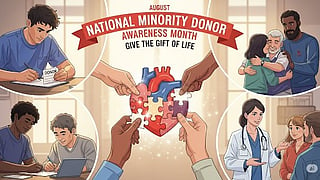ROCHESTER, Minn. — Organ donation is a powerful act of generosity and compassion. It is one that can save lives, restore health and offer hope to those facing critical illness. While donation rates vary across different communities, there is a meaningful opportunity in underrepresented communities where donation rates remain disproportionately low. This presents an opportunity for people to help raise awareness and inspire others to consider this vital choice.
More than 106,000 people in the U.S. are waiting for a lifesaving organ transplant, according to the United Network for Organ Sharing (UNOS)(1). Many come from diverse backgrounds, yet donor representation from these communities remains low. By learning about organ donation and choosing to register, whether as a living or deceased donor, individuals can help strengthen awareness and directly support the health and well-being of their communities.


